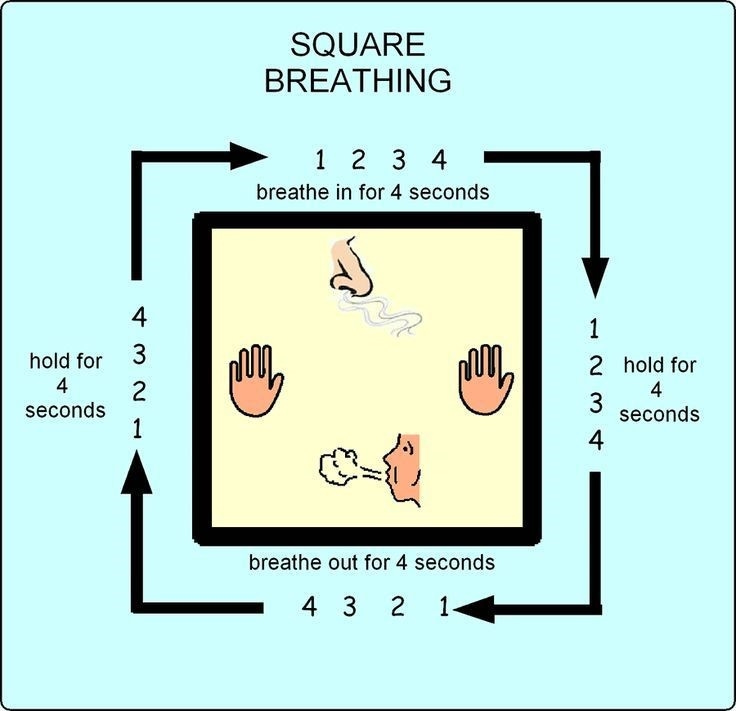Last week we discussed the thinking brain vs the reactive brain and the three states of the Polyvagal theory. CATCH UP ON PART I, first, if you’ve missed it.
Regular practice of self-regulation techniques will help you strengthen your self-regulation ‘muscle’ which will allow you to face life’s challenges more easily and shift from a FLIGHT, FIGHT OR FREEZE MODE to a CALM AND WISE MODE more swiftly.
a) Practice mindfulness: Be in the here and now.
Take 2 min Brain Power Breaks throughout the day (Maybe you can build up to 10 min sessions morning & night + three mini breaks during the day). Focus your attention on physical sensations from any of your five senses, notice any intruding thoughts non-judgmentally and let go of them then shift your attention back to your physical sensation.
look intently at an object or a scene. Be as curious as a child.
listen carefully to the sounds around you
feel any object slowly or use a scalp massager or feel a feather brushing against your hand
Savour your food. Notice the taste, texture and smell
Mindful breathing: Focus on your breath. Notice your chest rising and falling. Label your breathing as inhale-exhale. Label any intruding thoughts and let go of them and return to your breath (example: say inhale, exhale, inhale, exhale, my project, inhale, exhale…., shopping list… inhale, exhale…)
Try a body scan: Notice the sensations in your body. When your mind drifts away, return to noticing your physical sensations.
b) Use a relaxation technique:
Extended exhale breathing (make your exhale twice as long as your inhale: inhale for 4 – exhale for 8)
Slow-paced breathing (inhale for 5, exhale for 5 –a total of 6 breaths per minute)
4-7-8 breathing method (inhale for 4, hold for 7, exhale for 8)
Square breathing (inhale for 4, hold for 4, exhale for 4, hold for 4)
Progressive muscle relaxation exercise (tense & relax your muscles)
Present moment grounding: notice 5 things you can see, 4 things you can touch, 3 things you can hear, 2 things you can smell and 1 thing you can taste, notice how you feel (Also try 3-3-3 Technique)
Use imagery: picture yourself in a serene place … this might be a place in nature like the beach or a forest or your backyard… You could imagine yourself alone or with a loved one.
Try this Guided imagery video for relaxation
c) Yawn or sigh to induce relaxation
d) Practice Yoga regularly. In yoga, you learn to focus on your breathing and your physical sensations. Balance exercises help you get centred. Stretching exercises help you release bottled up tension in your body.
e) Listen to guided meditation videos. They usually combine hypnosis, visualisations, breathing exercises, body scans and positive affirmations. The combination can be very relaxing and uplifting. Practising meditation before sleep can also help you fall asleep faster and have a more restful sleep which in turn can help calm your nervous system. Try these videos by the Mindful Movement:
Quick reset meditation for overwhelm (includes a grounding exercise, square breathing, locus of control)
(Small warning: Be careful not to become dependent on these videos to fall asleep. Try listening to them during the day sometimes and before sleep on some nights)
f) Exercise regularly to prevent going into a shutdown state, particularly doing cardio. This will improve your heart rate variability which is a measure of how strong your ‘self-regulation muscle’ is. Exercise will take you through a full cycle: activation, slowing down, calm and relaxation.
g) Dance especially with a partner as synchronising your movement and making eye contact leads to co-regulation.Having to focus on the intricate dance steps takes you out of your mind and into your body allowing you to be grounded in the here and now and frees you up from negative thought patterns that may instigate a fight, flight or freeze state.
h) Use a massage foam roller regularly to loosen your knots or maybe treat yourself to a massage.
i) Many therapists also recommend the following:
singing, humming, gargling or laughing (The vagal nerve passes near your vocal cords and is stimulated by vocal vibration)
cold showers or putting your head under cold running water or splashing your face. It may help reboot your nervous system and induce a sense of calm.
(I don’t have direct experience with these options but they may work for you)
CONSIDER WATCHING THIS VIDEO: Learn how you can regulate your nervous system
CONSIDER TAKING THIS FREE COURSE: Grounding Skills (Learn different ways to activate the parasympathetic system to shift to the Safe & Social State)
Next week, I will share with you many ideas that will help you experience micro-moments of positive affect. It all adds up!
GO TO PART III
My mission is to help improve the health and wellbeing of people around the world. Please help me mobilise humanity towards personal agency by sharing my work.
DISCLAIMER: I take no commission from any of the above programs. I am sharing them because I have personally tried them and found them beneficial and I am hoping you would benefit from them too.
DISCLAIMER: All information provided by Abir Ballan is solely intended for educational purposes and is not a substitute for expert advice, diagnosis, or treatment regarding medical or mental health conditions. Always consult your physician before making any decisions related to your physical or mental health.
ABOUT THE AUTHOR
Abir Ballan has a Masters in Public Health, a graduate degree in special needs education and a BA in psychology. She is a children’s author with 27 published books.













